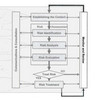 Can balanced scorecards help assess your supply chain vulnerability or your exposure to supply chain disruptions? Maybe. This article will take a closer look at how balanced scorecards can assist in measuring the performance of manufacturing facilities, warehouses and delivery services from various viewpoints, including customer satisfaction and financial information, giving key manager key performance indicators.
Can balanced scorecards help assess your supply chain vulnerability or your exposure to supply chain disruptions? Maybe. This article will take a closer look at how balanced scorecards can assist in measuring the performance of manufacturing facilities, warehouses and delivery services from various viewpoints, including customer satisfaction and financial information, giving key manager key performance indicators.
Balanced scorecards
Strategic management thrives on quantification and measurement. This approach started off strictly in the financial aspect of things: costs versus profits, supply versus demand, and so on. As management techniques evolved, the use of measurable parameters, known as metrics, and the most important of which are known as key performance indicators, became more commonplace. Balanced scorcards can help you keep track of these KPI.
Unlimited possibilities
Balanced scorecards can be put to use in almost any field imaginable. Marketing is one field where public relations or promotion metrics can be used. Promotion KPI are important and useful measures that will help marketing professionals describe the marketing processes. With promotion scorecards you can get a realistic grasp on just how effective your individual marketing and public relations campaigns really are.
Supply Chain Balanced Scorecard Metrics
When it comes to measuring the performance of your supply chain two of the important indicators are
Claims Percentage for Freight Costs: Calculated by dividing total loss and damage claims by total freight costs. Generally measured in total and for each carrier. A high number generally indicates packaging problems, or process problems at the carrier.
On-time Pickups: Calculated by dividing the number of pick-ups made on-time (by the freight carrier) by the total number of shipments in a period. This is an indication of freight carrier performance, and carriers’ affect on your shipping operations and customer service.
Other performance indicators are Defects Per Million Opportunities, Inventory Months of Supply, Transit Time, On Time Line Count, Customer Order Promised Cycle Time, to mention but a few. Here is an example, showing how balanced scorecards for supply chains can be put into use.
Logistics KPI
There are many possible key performance indicators that can help quantify and manage logistics. But apart from simply measuring performance, what is really helpful is when you benchmark, or compare your KPI with the KPI of similar organizations. This way you can get a clear idea of how other companies are faring, and how your company is doing in comparison. This can then provide impetus for necessary changes. The proper use of logistics KPI’s, among other KPI’s, can mean the difference between a struggling business and a successful one. Not only that, a business that knows its KPI is also more likely to know how to recover from a supply chain disruption.
Read more
Strategy2Act is one of many software for designing and using balanced scorecards. On their website you can find many examples of how to use scorecards. You can also download a 30-day evaluation trial.












